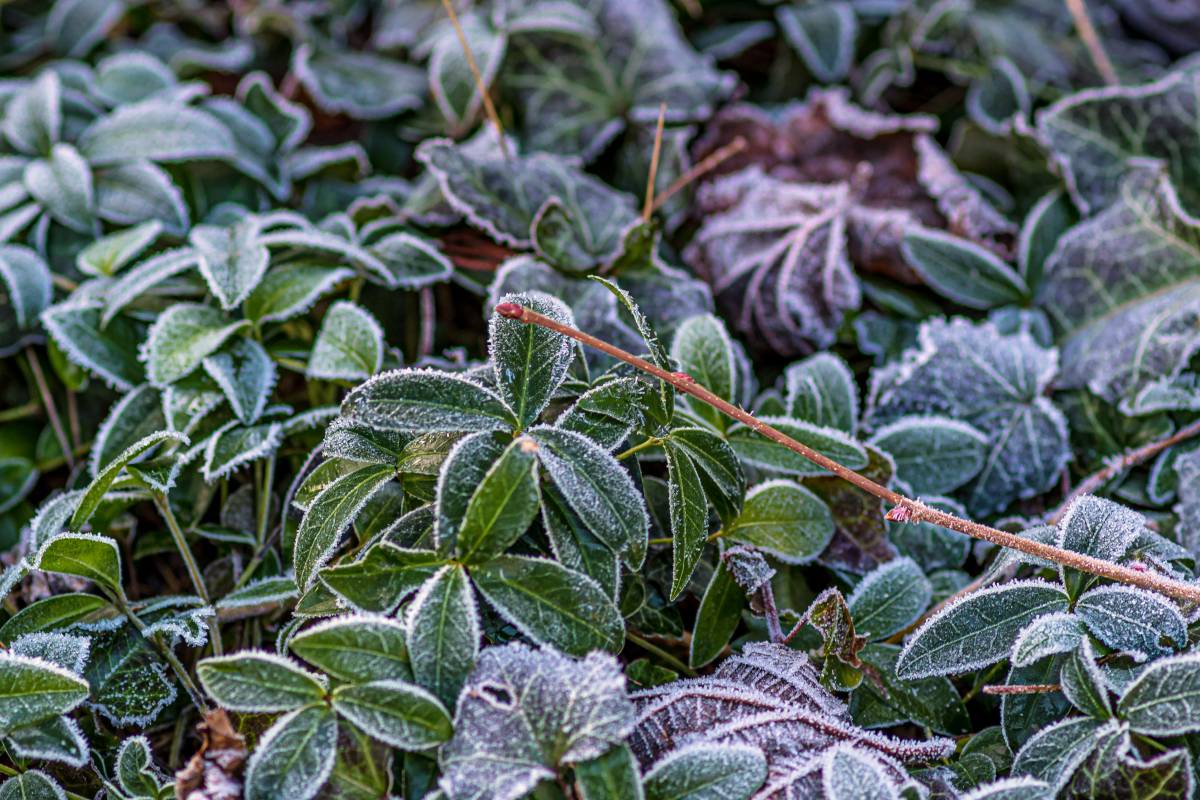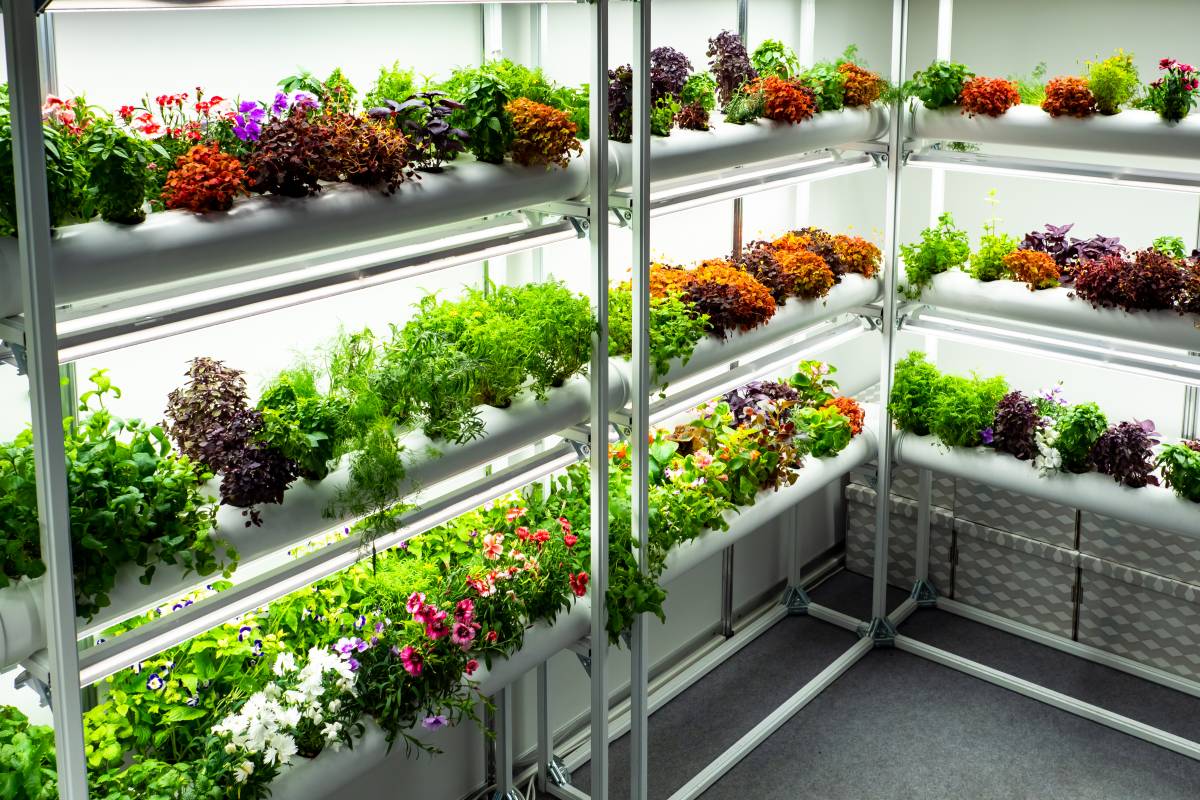- Home/
- Guides/
- Garden Planting/
- First and Last Frost Dates

First and last frost dates (and why they matter)
Looking to tend to your garden this winter? Here's what you should know.
Get help with your gardenLast Updated on
First and last frost dates should be just as important in a gardener's calendar as Christmas or your partner's birthday. Understanding these as part of your garden timing will help you avoid frost damage to your plants and flowers in the spring weather.
What is a frost date in gardening?
Frost dates refer to days when temperatures fall to 0°C or lower, which is cold enough to damage or kill your plants. Understanding these timelines and the average temperatures let you know when the optimal growing season is. The last frost date in Spring signifies the end of the cold snap and a good time to start your new garden (especially if you’re planting veggies).
Frost dates are important to note, as the first signs of Spring can be difficult to spot for many gardeners who are starting their seed plan. A great way to prepare for this is by understanding when to plant.
In many cases, this means getting plants in the ground when the average last frost date passes. This will change based on your area but is a crucial first step to ensure you enjoy a successful spring garden.
Read on to understand more about frost dates and why they are important.
What is the first and last frost date?
The last frost date references the final spring frost in your location, while the first frost date signifies the beginnings of spring frost. The date and temperature will vary greatly depending on your state and elevation. Whether you’re in an urban or rural environment also plays a role. Urban areas heat up quickly in Spring, and as a result, the last frost dates can change by a few days or even a week.
Location |
Last frost date |
Aberdeen |
1-10 May |
Aberystwyth |
11-20 May |
Barnsley |
11-20 April |
Basingstoke |
1-10 May |
Bath |
1-21 March |
Belfast |
1-10 April |
Birmingham |
21-30 April |
Bournemouth |
11-20 April |
Bradford |
21-30 April |
Bristol |
11-20 March |
Cambridge |
11-20 April |
Cardiff |
11-20 March |
Carlisle |
11-20 May |
Derby |
1-10 May |
Derry |
21-31 March |
Dumfries |
21-30 April |
Dundee |
1-10 April |
Durham |
1-10 April |
Edinburgh |
1-10 May |
Exeter |
1-10 May |
Falmouth |
21-31 March |
Glasgow |
1-10 April |
Gloucester |
11-20 March |
Greenwich |
21-31 March |
Harrogate |
21-30 April |
Hereford |
21-30 April |
Holyhead |
21-31 March |
Hull |
21-30 April |
Inverness |
21-30 April |
Leeds |
21-30 April |
Liverpool |
21-30 April |
London |
11-21 March |
Londonderry |
21-31 March |
Manchester |
1-10 April |
Margate |
21-30 April |
Newcastle Upon Tyne |
21-30 April |
Newquay |
21-31 March |
Norwich |
1-10 April |
Nottingham |
1-10 May |
Oxford |
21-30 April |
Penzance |
21-31 March |
Peterborough |
21-30 April |
Plymouth |
21-31 March |
Preston |
21-30 April |
Reading |
1-10 May |
Rhyl |
1-10 April |
Saint Helens |
21-30 April |
Sheffield |
21-30 April |
Southampton |
11-21 April |
St Ives |
11-21 March |
Stirling |
21-30 April |
Sunderland |
11-21 April |
Swansea |
21-31 March |
Telford |
11-21 May |
Torquay |
21-30 April |
Truro |
21-31 March |
Tyneside |
21-30 April |
Watford |
21-30 April |
West Bromwich |
21-30 April |
Westminster |
21-30 March |
Weymouth |
11-21 March |
Wolverhampton |
1-10 May |
Yeovil |
11-21 March |
York |
1-10 May |
By getting the timing right, your initial plantings will be protected from cold temperatures, ensuring they have the best chance to not only survive but thrive.
|
Also read: How to protect plants from frost |

How does the last frost affect vegetables?
The last frost date in Spring determines when the first seeds of your new plantings will germinate. During Spring, the nights reach temperatures too cold for new vegetable plants to survive in.
Spring crops like lettuce, carrots, cabbage, spinach, and radishes may be able to withstand colder temperatures. However, warmer-season crops, like cucumbers, tomatoes, and butternut squash or pumpkin, will struggle.
💡 Pro tip: Most seed packets will reference planting guidelines based on the last frost date. By understanding more about your climate, you can plan with this information or work with a gardener who can help you.
How do you find your specific last frost date?
Understanding first and last frost dates is much easier for gardeners today, thanks to the many online resources available. For example, Plant Maps offers the easiest way to understand your UK region's average annual temperatures.
Last frost date data is based on historically averaged temperatures. As a result, there is a slight chance that frost can occur after the dates listed, creating frost damage on plants. We recommend building in a little buffer to allow for this if you are worried about plant damage.
Always keep an eye on the weather forecast as well. Seed guidelines are available to work from your last frost date, and with the right timing, you'll enjoy a bountiful spring garden!

How do you know when it's the last frost?
There are many online resources that will help you understand the first and last frost dates for your area. The National Weather Service and the Met Office often tracks this data as well. It is important to know that no matter where this information comes from, there can be a slight variation in the actual date due to changing and unpredictable weather patterns.
What plants are sensitive to frost?
A range of tender plants and edibles can be very sensitive to frost. This may include:
Fruits & Vegetables
Avocados
Citrus trees
Tomatoes
Pumpkins
Sweet potatoes
Cucumber
Okra
Eggplant
Corn
Peppers
Plants & Flowers
Fuchsia
Bougainvillaea
Begonias
Impatiens
Geraniums
Succulents
Tropical plants
If you are planning on planting any of these, be sure to find out when the last frost dates are in your area, so you can ensure their survival by planting afterward.
☞ Learn more: Gardening basics
A warm garden is a happy garden
There are many different things to be aware of to ensure your garden thrives; it's one of the reasons why we have the gardening hub, a place for helpful resources to help you have the greenest of thumbs.
If you need an extra hand in the garden, plenty of Airtasker gardening experts could be of service. From general yard work to other outdoor areas that need attention like pool maintenance, there is always a Tasker ready and willing to help.
Find garden planters, fast
Find a garden planter
Related articles

36 Quirky plant pot ideas you’ll love
Read more
Related price guides

How much does weeding cost?
Read more

How much do gardeners charge?
Read more

How much does mulch cost?
Read more

How much does garden clearance cost?
Read more

How much does hedge removal cost?
Read more
Let's do this!
It's free and takes only a minute.













